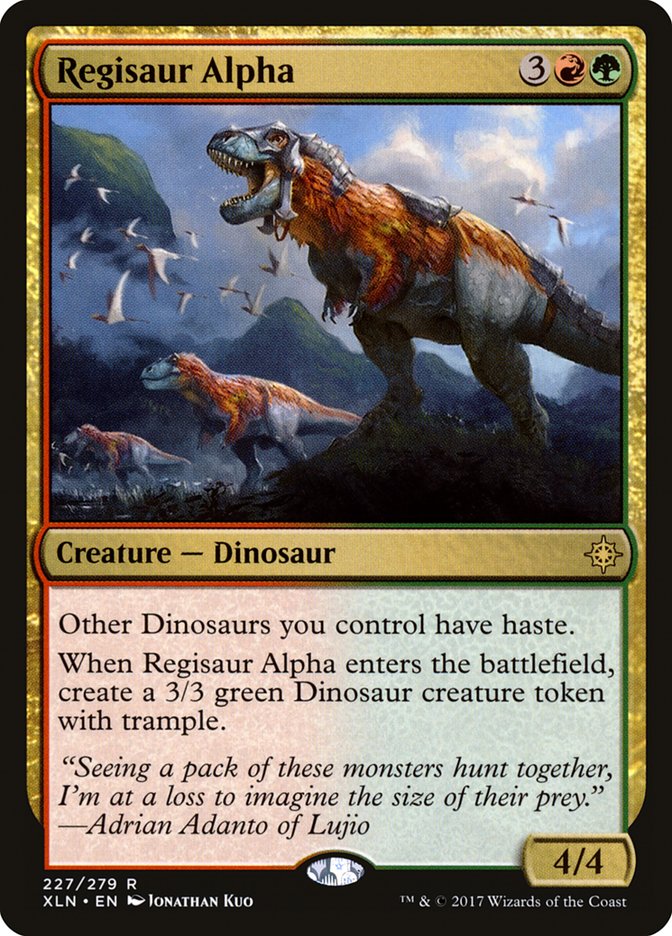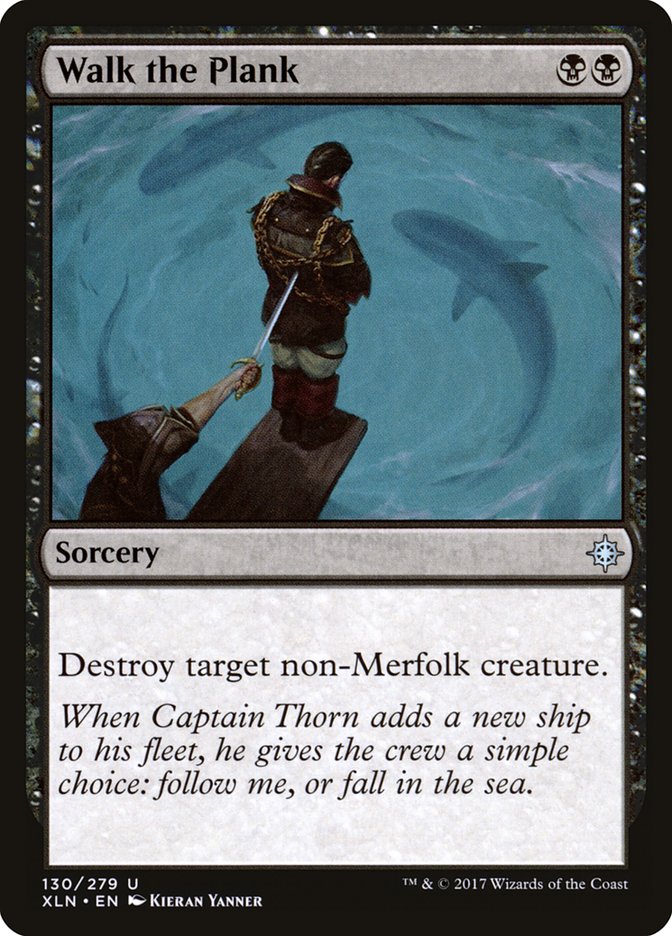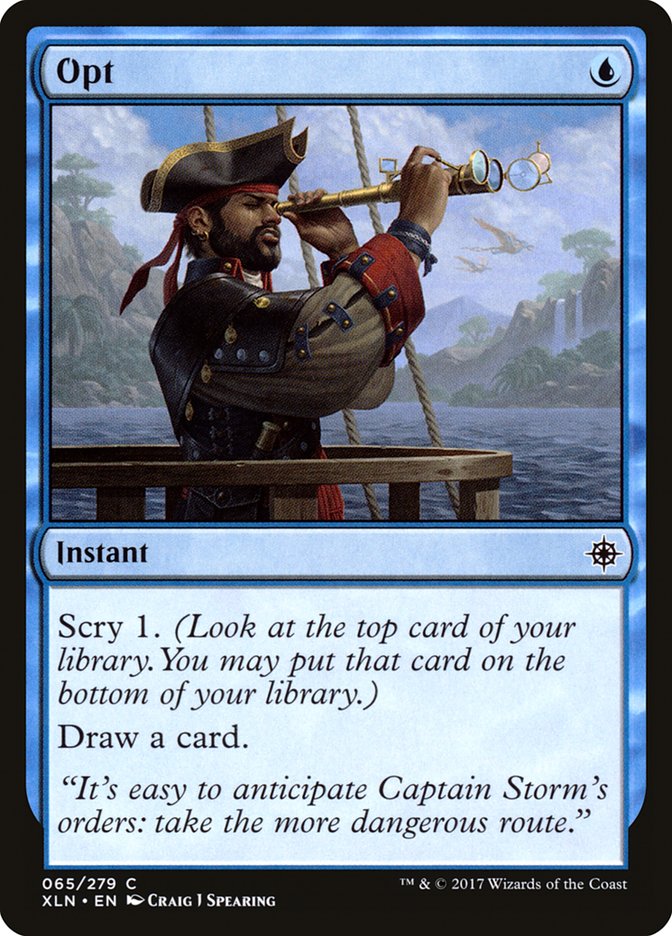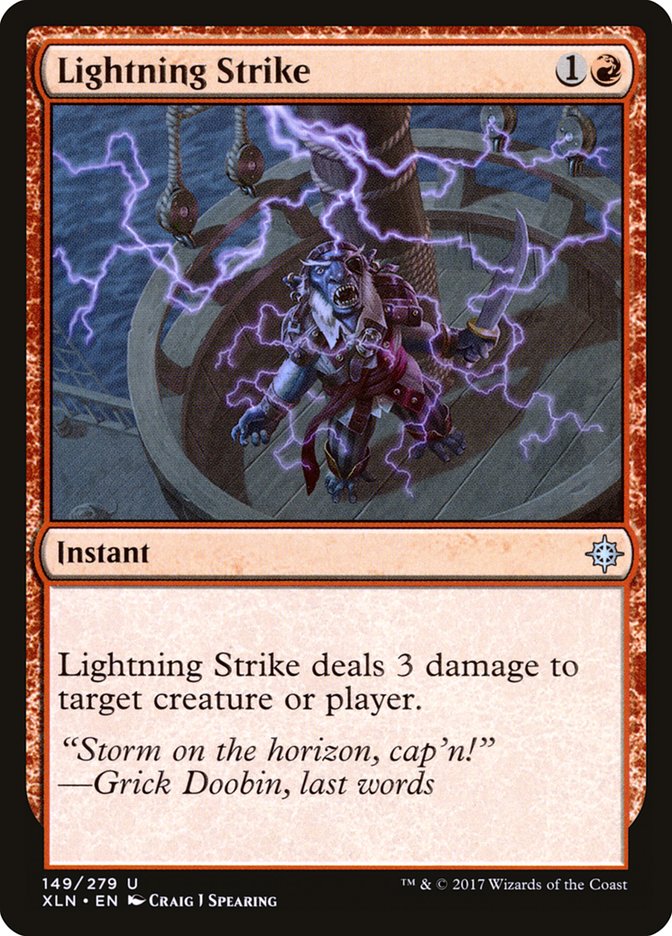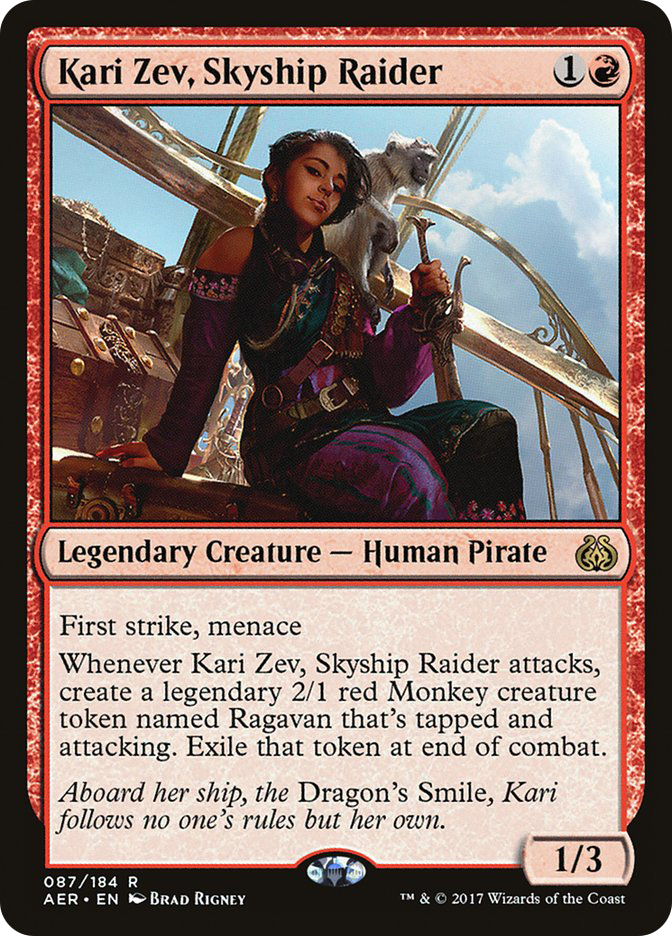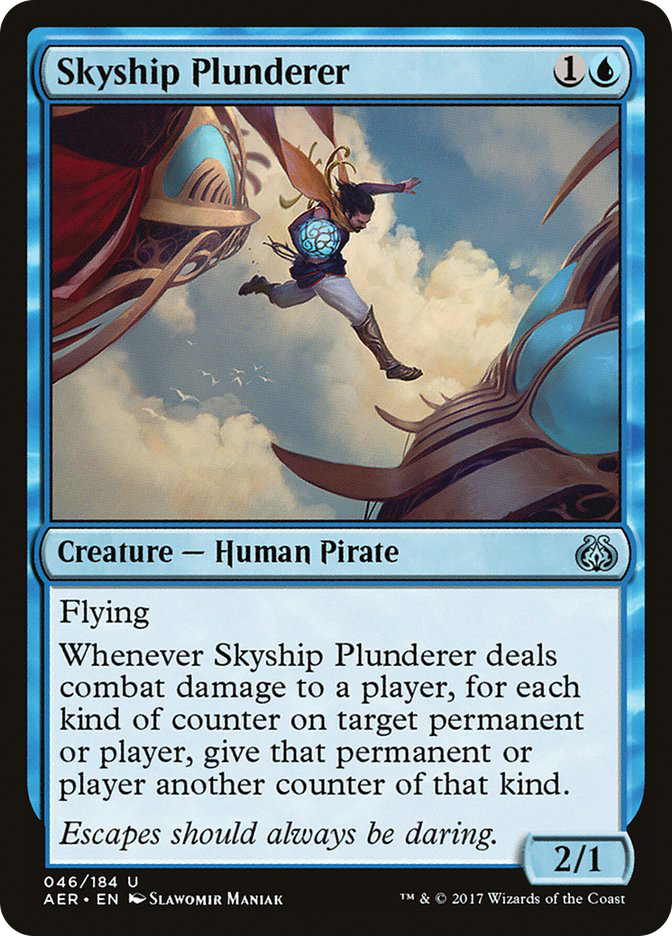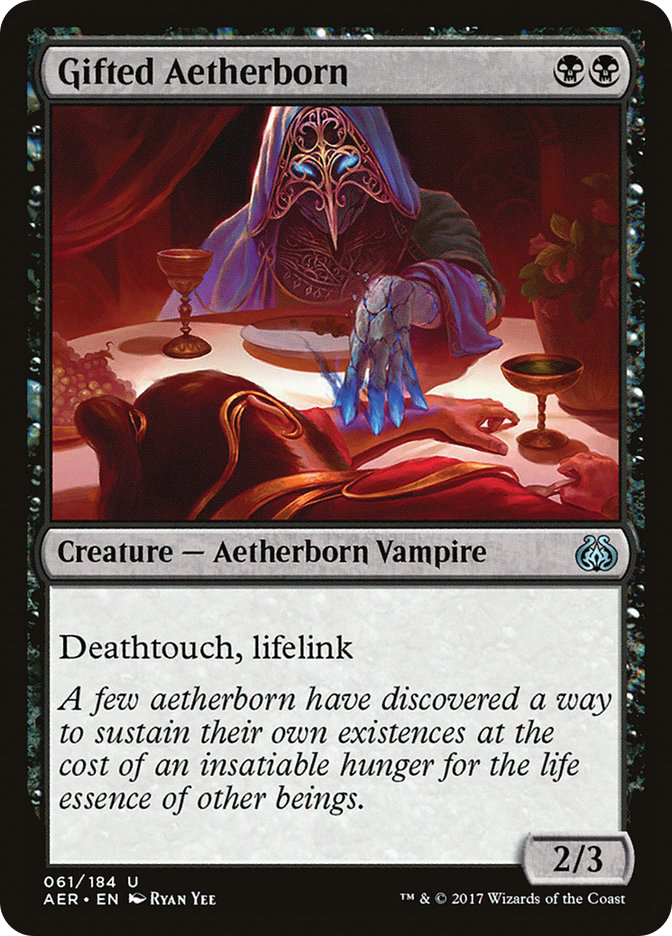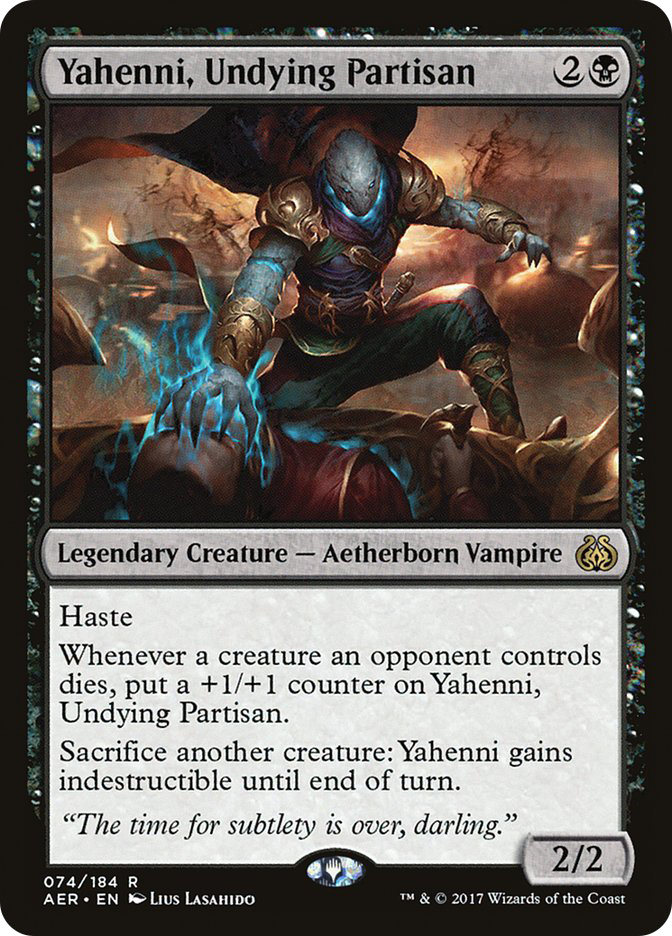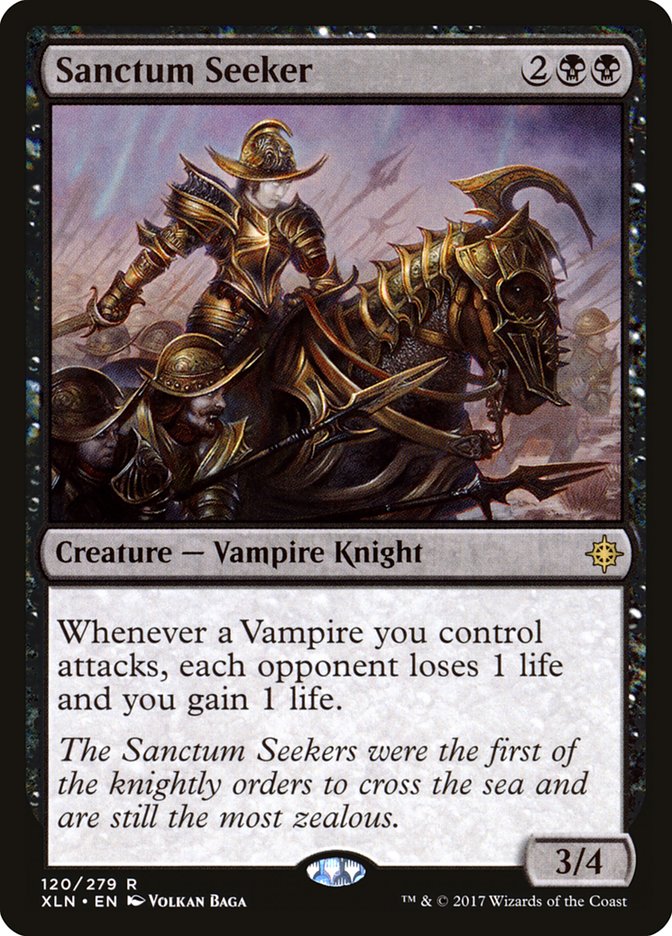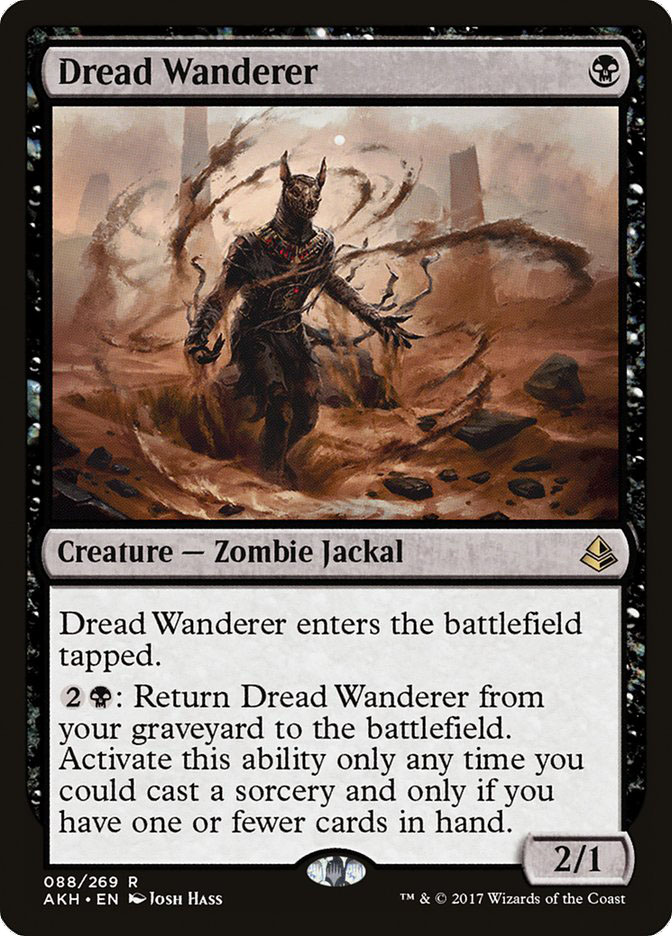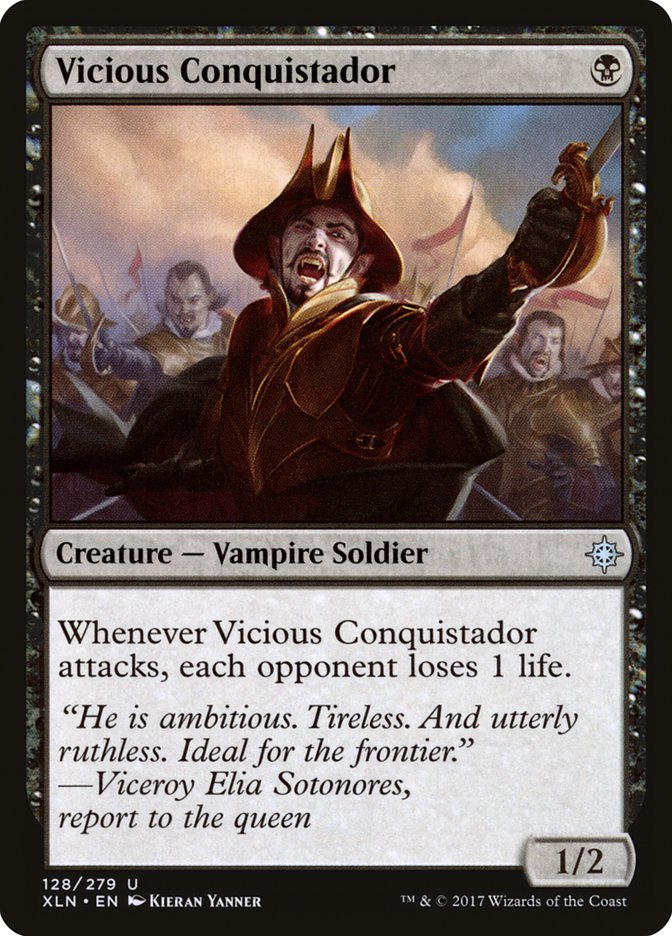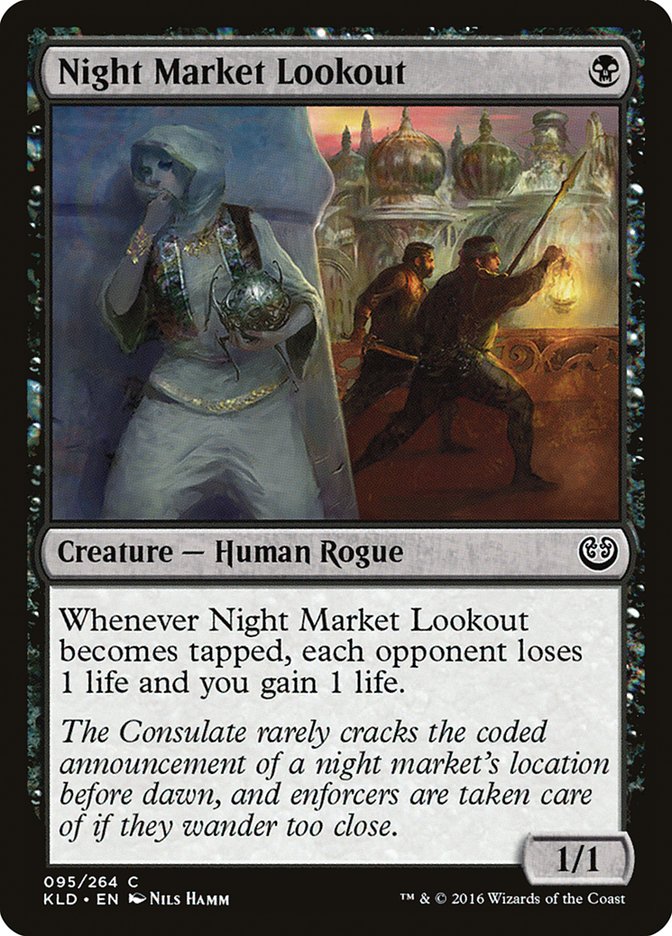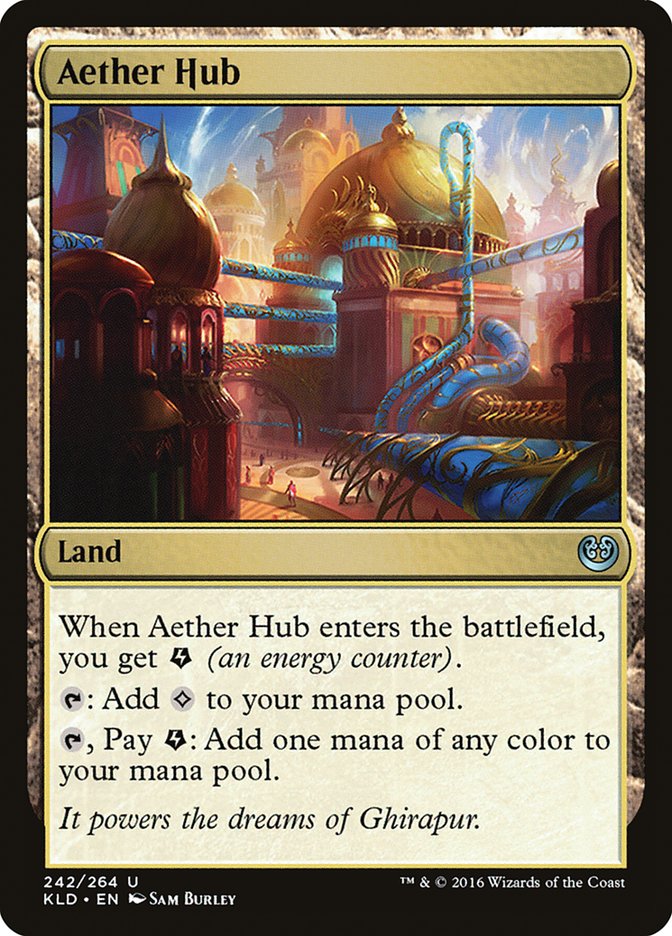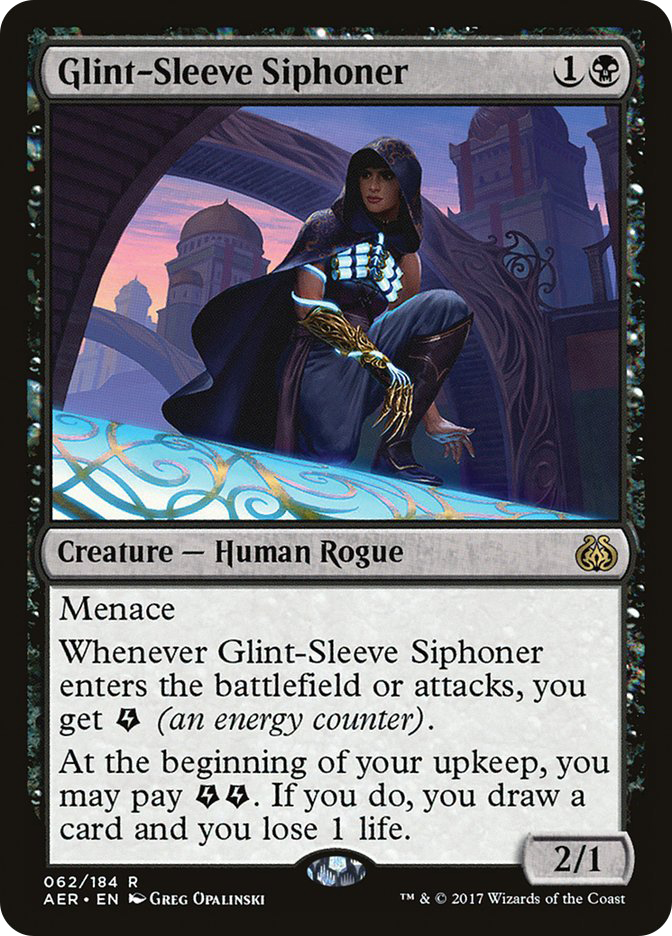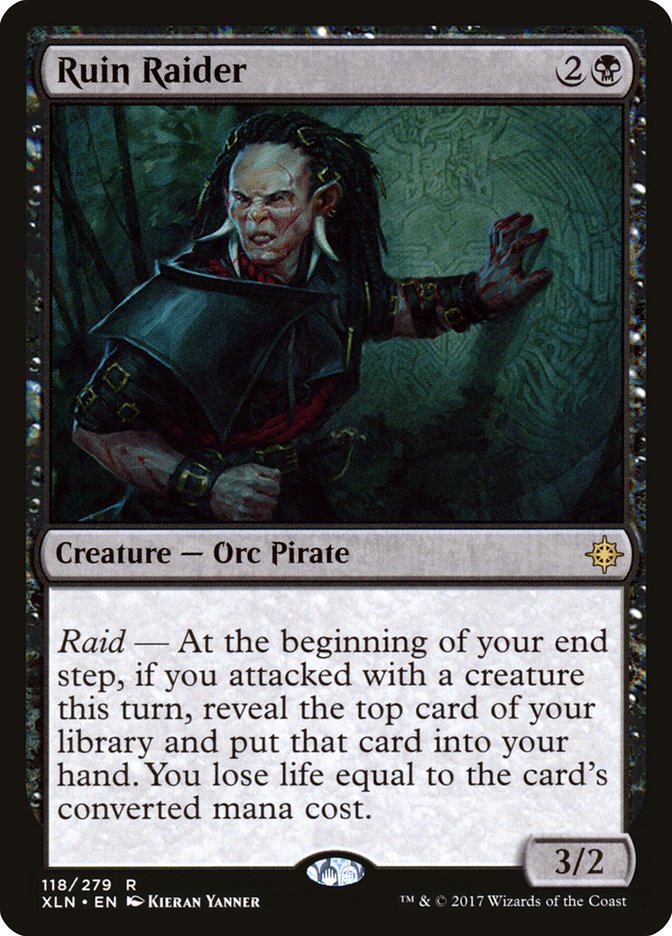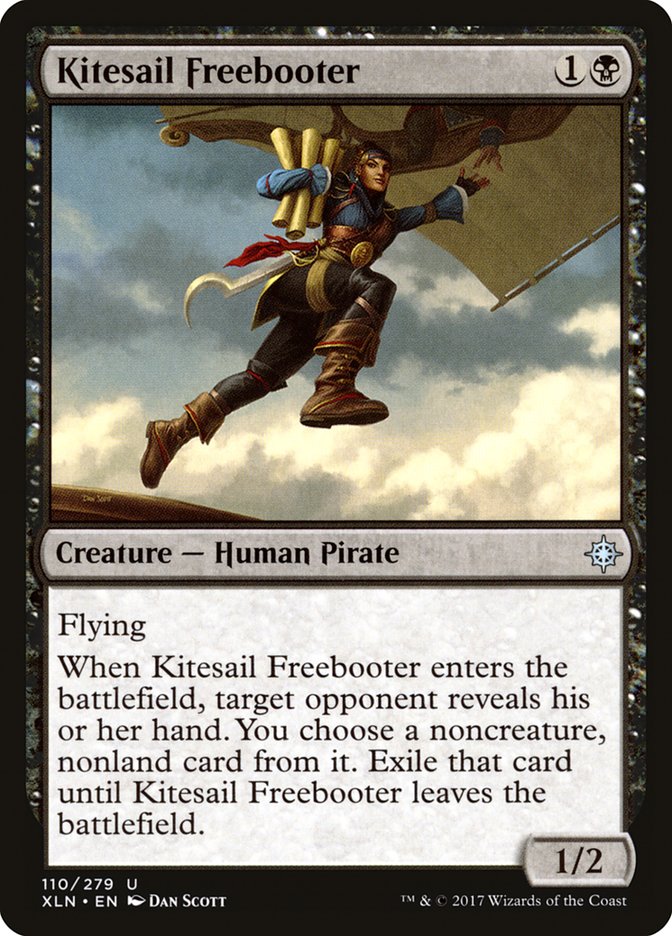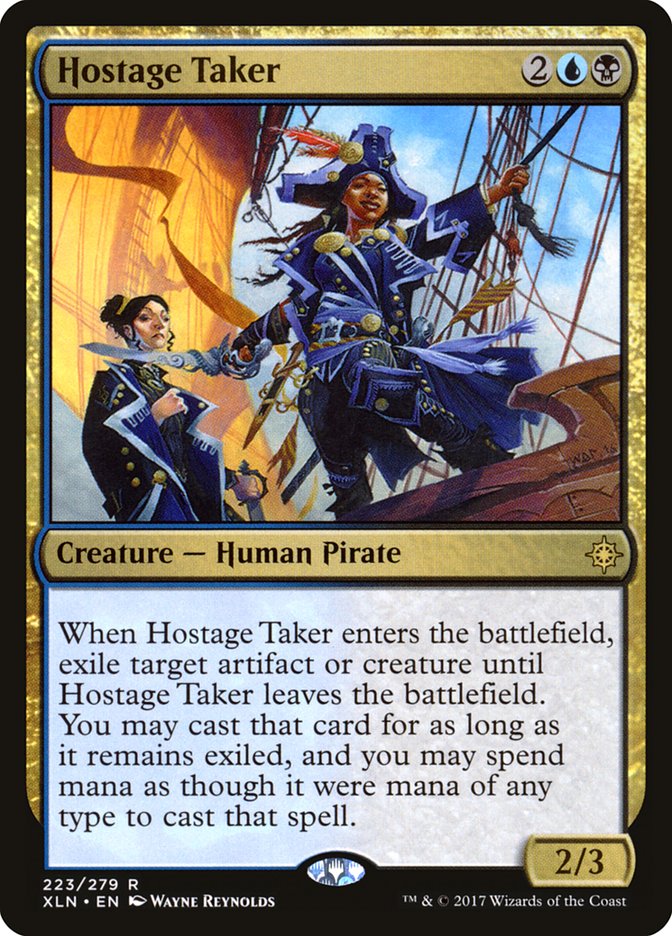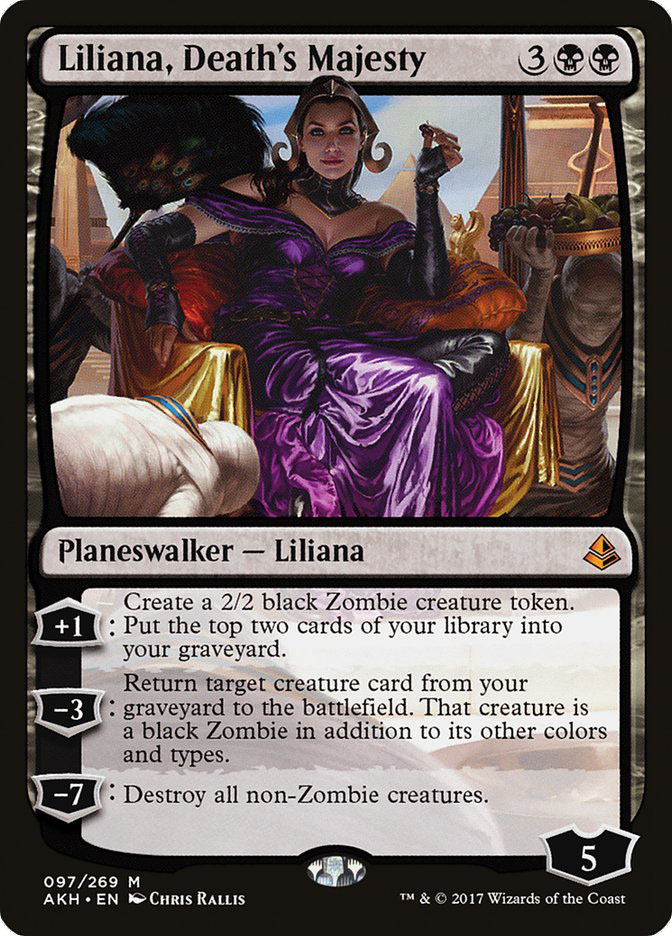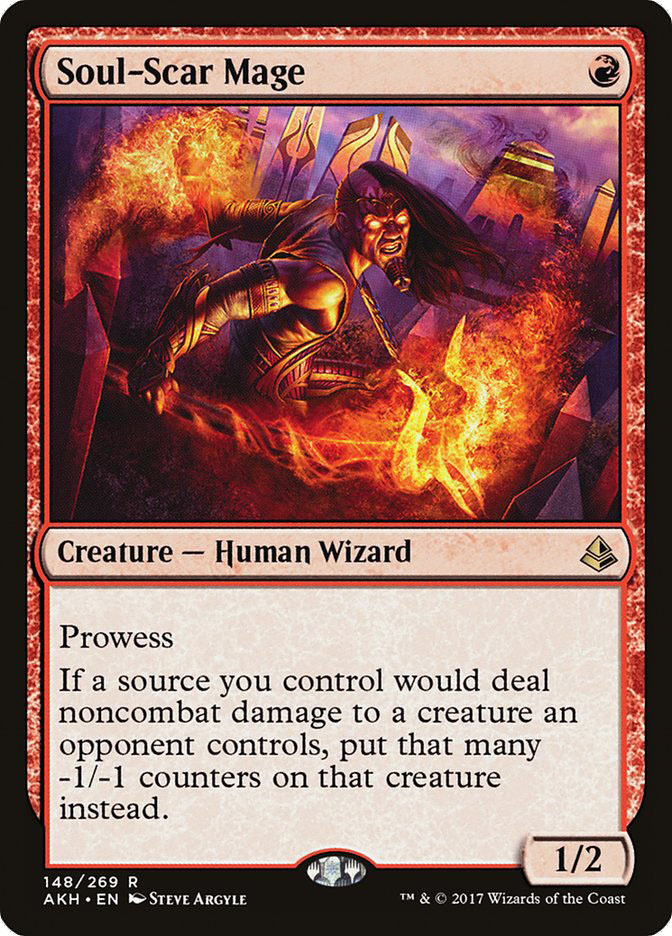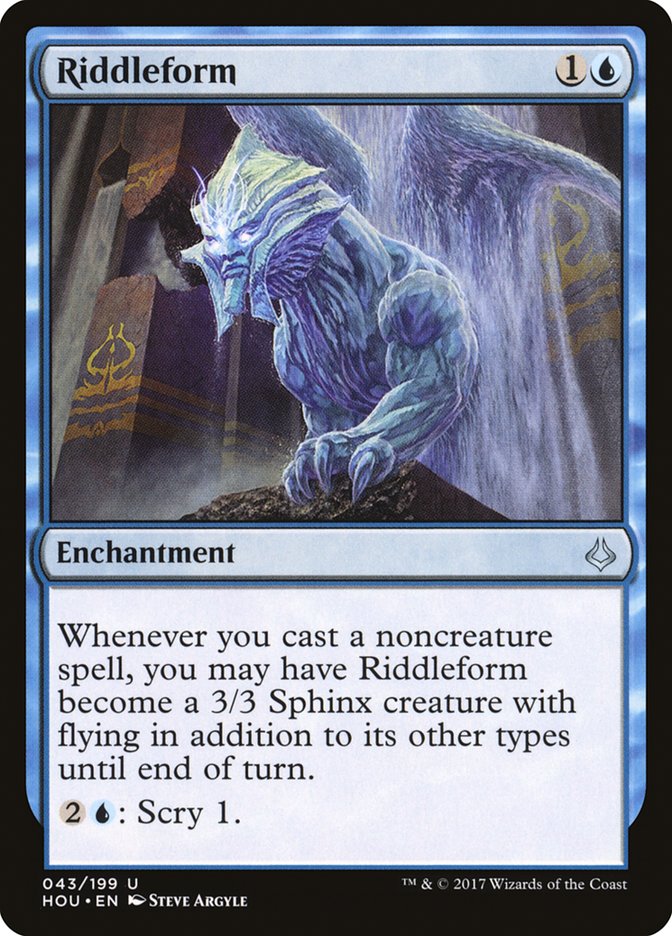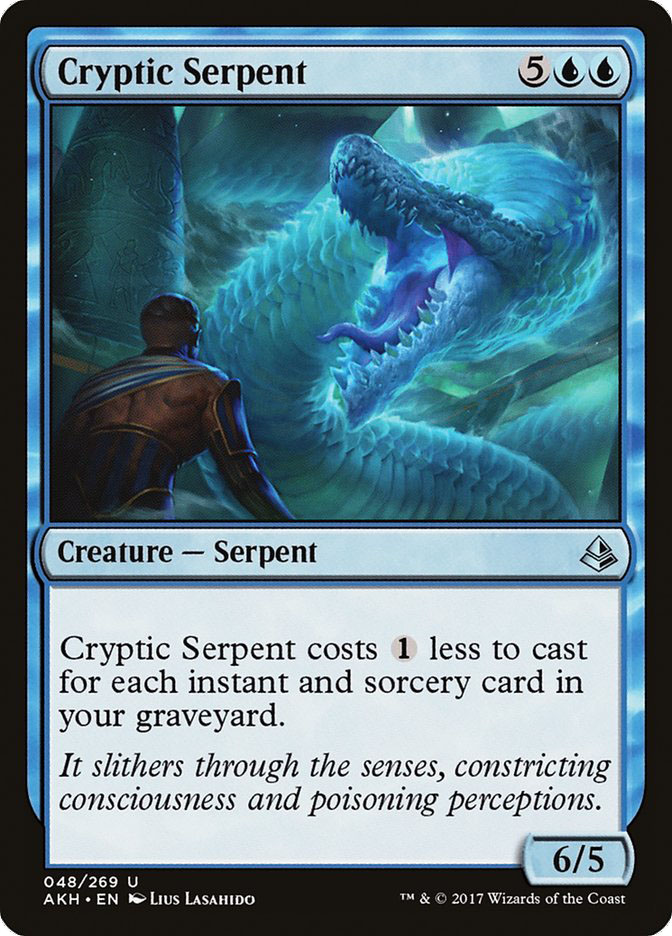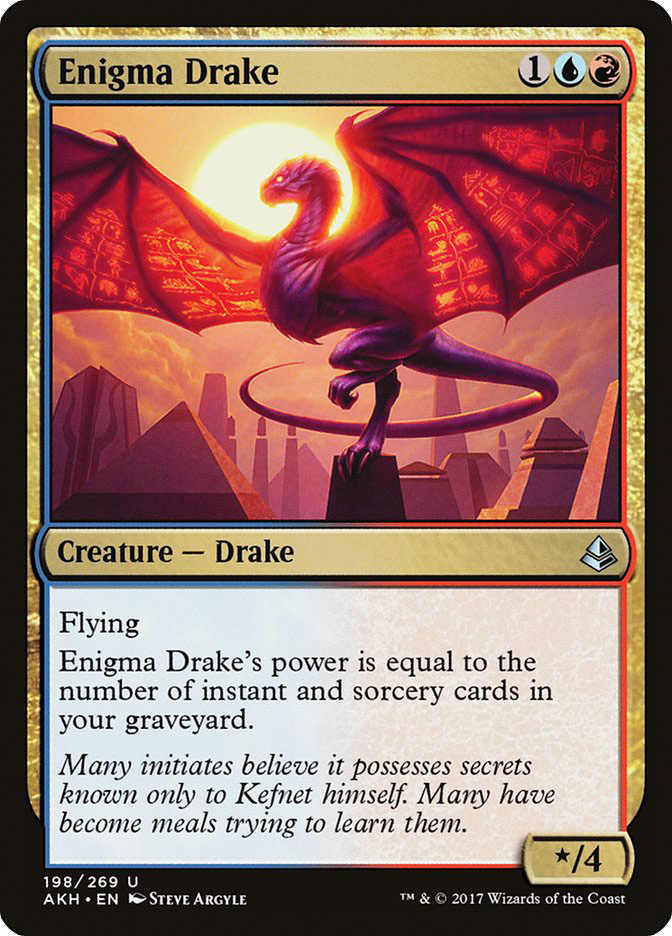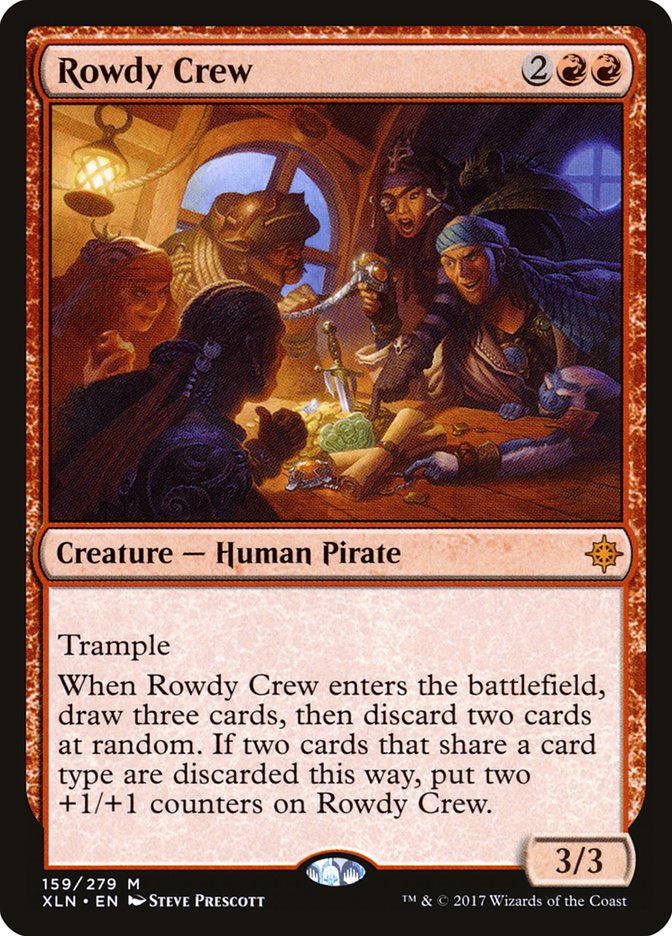So long, Gideon, Ally of Zendikar and Tireless Tracker. Hello, Regisaur Alpha and Walk the Plank!
Welcome back, Duress, Opt, and Lightning Strike!
It’s that time of year again, when we get to be excited about new cards without being overly concerned about the well-tuned enemies that are waiting on release weekend because the rotation brings a much different format.
Sure, Temur Energy and Ramunap Red should still be around, but the forms they took during the last format are not necessarily the same forms they should take to tackle Ixalan, so their advantage in refinement shouldn’t be too large.
Moreover, Ixalan looks to be a rather powerful set with plenty of internal synergies to build around as well as powerful standalone cards. Given the heavy tribal theme of the set, the synergies are getting the most hype as players are trying to figure out exactly what their Dinosaur, Pirate, Merfolk, and Vampire decks should look like.
But the next-most-hyped cards are the various cheap, interactive spells that are in Ixalan. Opt, Duress, Spell Pierce, and Lightning Strike are all coming back, and Walk the Plank looks to be the broadest two-mana removal spell since Doom Blade. These effects should do a good job of keeping synergy-laden decks in check, so it makes sense why they’re coming back at this time, and understanding the dynamics between these two parts of the emerging metagame will be key to anyone’s success.
Unfortunately for all the tribal lovers out there, the cheap interaction will predominate early. We’re only one set into Ixalan block, which means not all the synergy pieces are here, and in my brewing thus far, it does not appear that there are quite enough payoffs there to combat the raw power that other decks can present.
Ixalan‘s tribes aren’t getting much support from the other sets in Standard. In fact, there are only four overlapping cards: Kari Zev, Skyship Raider; Skyship Plunderer; Gifted Aetherborn; and Yahenni, Undying Partisan. Dinosaurs and Merfolk are operating entirely within the one set, and that means you have to play subpar cards to make the payoff cards worthwhile. Giving up on powerful cards from Kaladesh and Amonkhet is a steep price to pay, and until we get more pieces I don’t see it being worthwhile.
For example, one of the decks I was looking at was Vampire tribal. It’s certainly the least-heralded tribe, and I always like to explore what other people aren’t looking at to see if perhaps they’ve missed something. The payoff that stands out to me is Sanctum Seeker, since its ability is incredibly powerful and it has the stats to survive the instant-speed red removal.
Much like Hellrider, Sanctum Seeker wants to be near the top of the curve in an aggressive deck so you can get immediate value from it. Gifted Aetherborn can slot well in an aggressive deck, as can Yahenni, Undying Partisan, so some of our work is done for us, another positive sign.
But once you commit to a BB two-drop like Gifted Aetherborn, it makes playing a second color quite difficult. I’d like to have Duskborne Skymarcher and Legion’s Landing as one-drops, but it’s quite hard to make the mana work with only one true multicolor land in Concealed Courtyard. The deck ended up looking something like this:
Creatures (25)
- 3 Yahenni, Undying Partisan
- 4 Gifted Aetherborn
- 4 Mavren Fein, Dusk Apostle
- 4 Sanctum Seeker
- 2 Duskborne Skymarcher
- 4 Vicious Conquistador
- 4 Adanto Vanguard
Lands (24)
Spells (11)

Maybe something like Metallic Mimic could help out here, letting you cut the Gifted Aetherborns, but you still want to play Walk the Plank, which is great at clearing away blockers, not to mention that Aetherborn is one of the better standalone cards in the deck.
You also have the problem of Yahenni not being well-supported. Ideally you’d have something like Call to the Feast to go with it, but that raises the deck’s curve too much. Consequently, we’re left with a single token generator for it and one that is highly vulnerable to removal.
Unsatisfied with this list, I looked to see if I could make a mono-black version work, even if I had to add non-Vampires and weaken Sanctum Seeker. I could play more powerful individual cards like Scrapheap Scrounger and Ruin Raider while having the buttery-smooth manabase that is so important for aggressive decks.
What I found was that between Dread Wanderer, Vicious Conquistador, and Night Market Lookout, black has access to twelve one-drops that attack for two effective damage, which could easily be the base for a strong aggro deck. Drawing inspiration from Caleb Scherer’s Top 8 list from Atlanta last April, I abandoned any pretense of being a tribal deck and simply built a Mono-Black Aggro list with the best cards in each slot. Here is the result:
Creatures (32)
- 4 Scrapheap Scrounger
- 4 Night Market Lookout
- 4 Glint-Sleeve Siphoner
- 3 Gifted Aetherborn
- 4 Dread Wanderer
- 4 Bone Picker
- 4 Ruin Raider
- 2 Kitesail Freebooter
- 3 Vicious Conquistador
Lands (20)
Spells (8)

Gone is the original purpose for exploring this strategy, as Sanctum Seeker is too high on the curve for a twenty-land deck, but the gains for abandoning the tribe are significant.
Glint-Sleeve Siphoner and Ruin Raider give the deck a ton of card advantage, while Dread Wanderer and Scrapheap Scrounger ensure you’ll always have attackers. Kitesail Freebooter offers some extra disruption and now our mana is excellent.
I’m not sure what the correct number of Aether Hubs is to support Siphoner and the sideboard copies of Aethersphere Harvester, but I’d rather start high and winnow down than start low, since that lets me collect more information in a short time span.
I mentioned above how desirable Walk the Plank is here, since it clears out blockers so well, and I think that point deserves further explanation. In reactive decks, you want instant-speed removal so you can use your mana on your opponent’s turn if they cast an important threat. You don’t have much to do on your turn, so if you’re always waiting until you untap to answer their turn, you’ll waste your mana in the early turns and never gain traction to reload with card advantage.
In a proactive deck, you are tapping out on your turn a lot, so you don’t have as many opportunities to cast removal at instant speed. Also, the pressure you put on your opponent often forces them to hold their creatures back to block, and your priority is answering their blockers before your combat step. Thus the downgrade from instant to sorcery isn’t nearly as problematic, while having a removal spell that can clear out a wide range of blockers is quite helpful. The change from Grasp of Darkness to Walk the Plank is going to encourage black decks to be more proactive, and it doesn’t get more proactive than this deck.
I’d love to have a Vehicle in the maindeck to use with Night Market Lookout (ahem, Smuggler’s Copter), but I don’t see any of the available options being good enough. Aethersphere Harvester is a great sideboard option, though, and one that should lock up the race against other aggressive decks much of the time.
As a mono-colored deck, the sideboard options are sparse, but you don’t want to oversideboard with this deck anyway, and you have a solid collection of additional disruption, especially with Duress and Kitesail Freebooter against control decks.
Speaking of Kitesail Freebooter, it’s definitely one of the cards I’m most intrigued by. Brain Maggot didn’t see much play, but the additions of flying and a point of toughness are perfect for this kind of effect, since the evasion ensures that it can reasonably attack for much of the game and the toughness helps to insulate it from Walking Ballista.
Since Freebooter doesn’t take creatures, you’re going to be targeting removal with it more often than not, so ideally you’ll be following it up with a powerful creature of your own that your opponent is now unable to answer. Enter Hostage Taker.
I wrote about Hostage Taker a few weeks ago, and it fits perfectly alongside Kitesail Freebooter. Both cards offer great disruption with a body to boot, although their diminutive stature ensures that they won’t be fitting into an aggressive shell. Fortunately, both are excellent targets for The Scarab God, which has proven to be among the more powerful cards from Hour of Devastation. The result is a sleek, powerful midrange deck:
Creatures (19)
- 2 Noxious Gearhulk
- 2 Gifted Aetherborn
- 3 The Scarab God
- 4 Champion of Wits
- 4 Hostage Taker
- 4 Kitesail Freebooter
Planeswalkers (2)
Lands (26)
Spells (13)

Between Opt, Strategic Planning, and Champion of Wits, this deck is going to find the cards it wants a large percentage of the time, and those cards are all high-impact. Despite this amount of card filtering, I still like having a high land count because four of them cycle and you have a ton of mana sinks, which is a huge advantage for a midrange deck.
I went with Duress over Negate or Spell Pierce in the sideboard because the deck is proactive, but I could certainly see a mix, especially with Kitesail Freebooter already in the deck. The Murders in the sideboard are meant to help against Vehicles, which are otherwise quite difficult to answer, especially Skysovereign, Consul Flagship.
It’s tempting to add more impactful reanimation targets for The Scarab God and Liliana, Death’s Majesty, but they really aren’t necessary and consistency is one of this deck’s primary strengths. All the creatures in the deck are easily castable, and Noxious Gearhulk as the high-end is a very powerful effect. The one Demon of Dark Schemes in the sideboard lets you have a bullet against low-to-the-ground aggressive decks, but it’s still a fine card in your hand. Just focus on grinding your opponent into a paste rather than ending the game immediately.
With how consistently disruptive this deck is, I would love to be matched up against tribal synergy decks, while the power level of your cards will allow you to go toe-to-toe with everything else.
This next deck was inspired by Jim Davis, who built a spicy little Riddleform deck shortly after Hour of Devastation was released. Opt is absolutely perfect for a deck like this, as is Lightning Strike, so I wanted to push a spell-heavy deck as far as I could.
Creatures (9)
Lands (21)
Spells (30)
- 3 Unsummon
- 4 Shock
- 4 Opt
- 4 Lightning Strike
- 1 Slip Through Space
- 4 Crash Through
- 4 Riddleform
- 4 Chart a Course
- 2 Vance's Blasting Cannons
Sideboard

Losing Fevered Visions is certainly problematic, but with more cantrips and the underrated Chart a Course, I don’t think this deck will struggle to keep the engine going. Also, you get to play one of the new transform cards from Ixalan, Vance’s Blasting Cannons. It’s not good in multiples like Fevered Visions and less effective overall, so it only merits a couple of copies, but it’s very powerful in this deck.
Cannons isn’t as good on the front side as some of the other members of the cycle, but Spitfire Bastion is incredible, and this deck is very good at transforming the enchantment with its bevy of cheap spells. The low land count in this deck also helps you to hit spells off the front side, thereby mitigating its downside relative to something like Chandra, Torch of Defiance. It still may be a worse option than the proven planeswalker, but the upside is high enough that I want to try it.
Soul-Scar Mage and Riddleform are the bread-and-butter threats, since they’re cheap and play nicely with your spell base, but after them you have some options. I like Enigma Drake and Cryptic Serpent the most, since they are great draws when you’ve already cast several spells. Enigma Drake has a sort of permanent prowess and hits the key four-toughness mark of the format.
Cryptic Serpent is nice in small numbers, but I certainly don’t want to flood on them in the early-game since that can grind your engine to a halt. Still, it’s incredibly efficient and plays well with Crash Through and Slip Through Space.
This deck is tailor-made for Spell Pierce, so I favor it in the split with Negate in the sideboard. Chandra’s Defeat gives you a removal spell that can kill Glorybringer while also being great against cheap red creatures. I’m not nearly as concerned about recursive creatures like Scrapheap Scrounger with this deck, so it gets the nod over the more versatile Magma Spray.
This deck may not fit the traditional idea of power, but all of its cards are so efficient and the synergies are so natural that I’m excited about what it can do. I’m also interested in exploring a Temur variant with Attune with Aether and Deeproot Champion, since fastlands and Aether Hub make the mana workable and turning some land spots into more cheap spells is a great way to ratchet up the synergies in the deck.
For an example list of that deck, check out Gerry Thompson’s article from last week here. His list is too reactive for my taste, but it’s a good place to start.
The last card that has caught my attention is Rowdy Crew. It’s hard to find a natural home for the card. It should work its way into God-Pharaoh’s Gift decks, but I want something more straightforward. It’s a 5/5 a large enough portion of the time that it can be a great beater in a creature-heavy deck.
Voltaic Brawler has been in need of a home for a while now (Electrostatic Pummeler decks don’t count), so, building with the energy mechanic, I ended on the following list:
Creatures (27)
- 4 Longtusk Cub
- 4 Voltaic Brawler
- 3 Lathnu Hellion
- 4 Servant of the Conduit
- 4 Greenbelt Rampager
- 4 Glorybringer
- 4 Rowdy Crew
Lands (22)
Spells (11)

Is this just a worse version of Temur Energy? The lands are there to make a three-color deck work, and Whirler Virtuoso, Rogue Refiner, and Bristling Hydra are great cards without a doubt, but we’re early in a format. Being more aggressive will be rewarded and everyone has Temur in their crosshairs, so going a little bigger in terms of creature sizing also makes sense. This deck has such large creatures that its sideboard Sweltering Suns are very close to Plague Winds against small creatures.
Blocking is going to be very difficult for your opponents since all your creatures are huge, and Blossoming Defense is an easy way to punish players who rely on removal, especially sorcery-speed removal like Walk the Plank.
I also think this deck makes great use of Hashep Oasis, an underrated part of the uncommon Desert cycle in Hour of Devastation, and it could be that you don’t want any copies of the more heralded Ramunap Ruins. You have lots of trample and flying creatures in this deck, so Oasis will often function as three or more damage for one less mana than Ruins.
I opted for Glorybringer over Regisaur Alpha here to get some more interaction in the deck while keeping the creature count high to maximize the potential of Rowdy Crew. In more spot removal- and control-heavy formats, I could easily see the Dinosaur taking the spot there, even with no other tribal synergies.
We haven’t had a Standard format so dense with good, cheap spells since Delver of Secrets was around. Unlike many, I had a blast during that format, so while I hope the metagame doesn’t warp as much as it did then, I’m excited to play technically intricate games of Magic where you have tons of options on every turn.
And while I’m not that high on tribal decks, I do think they will pop up. Dinosaurs in particular looks to be deep enough to support a powerful archetype right away, and as we have more time, better-tuned versions of tribal decks will likely emerge. But I think we’ll see those decks really break out in a few months when Rivals of Ixalan is released and they have their full slate of tools to work with.


